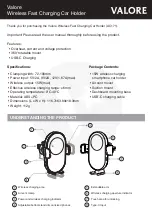
12
[H
3
O
+
] = [H
+
] = 10
-pH
c
alibration
c
alibration
theory
The sensor detects the partial pressure of H
2
S gas, which is only
one component of the total sulfide equilibrium system . If the total
sulfide concentration,
[S
-2
tot], is defined as:
S
tot
-2
= [H
2
S] + [HS
-
] + [S
2-
]
the H
2
S concentration will be defined as
K
1
K
1
K
2
[H
2
S] = [S
tot
-2
] /
(
1 +
[H
3
0
+
]
[H
3
0
+
]
2
+
)
which can be simplified to
K
1
[H
2
S] = [S
tot
-2
] /
(
1 +
[H
3
0
+
]
)
for pH<9 (Jeroschewski et al . 1996) . Thus it is necessary to know
the pH (i .e . to know [H
3
O
+
]) of the sample/calibration solution to
calculate [S
tot
-2
] (see Figure 1) .
pH = -log [H
+
]
In solutions with a pH below 4 the equation can be simplified to:
[H
2
S] ≈ [S
tot
-2
]
K
1
= 10
-pK1
pK
1
is dependent on temperature and salinity . The literature
gives slightly different equations for calculating pK
1
in water as a
function of temperature (T) and salinity (S) .
The following equation is derived by Millero et al . 1988:
pK
1
= -98 .08 + 5765 .4/T + 15 .04555 * LN(T) + (-0 .157 * (S
0 .5
)) +
0 .0135 * S










































